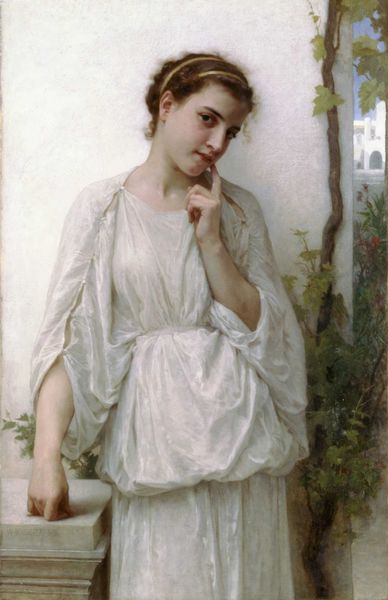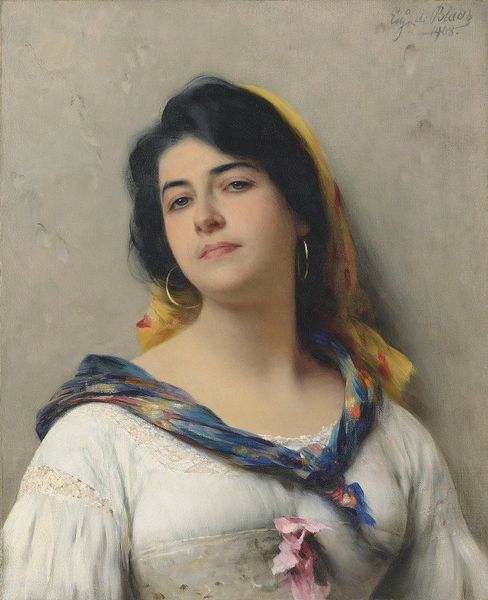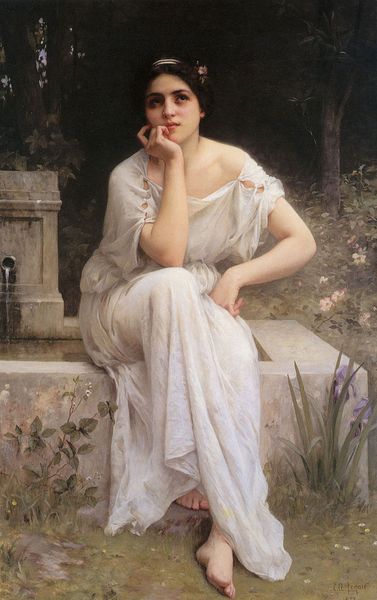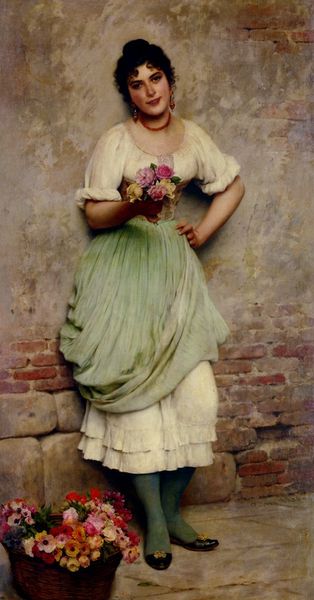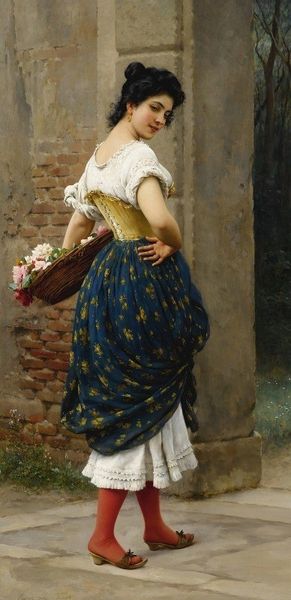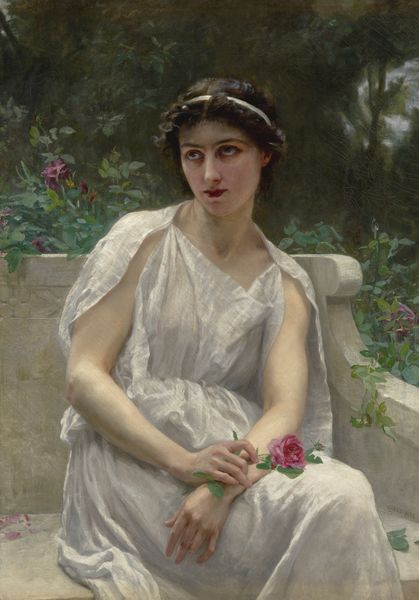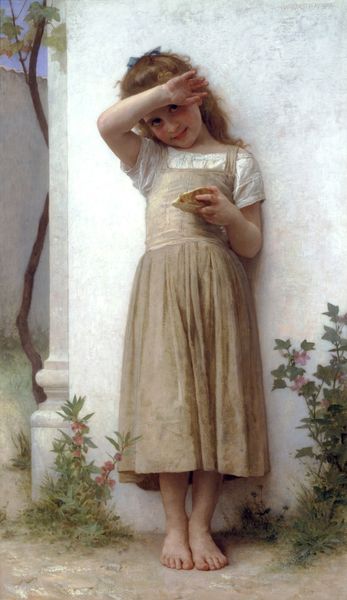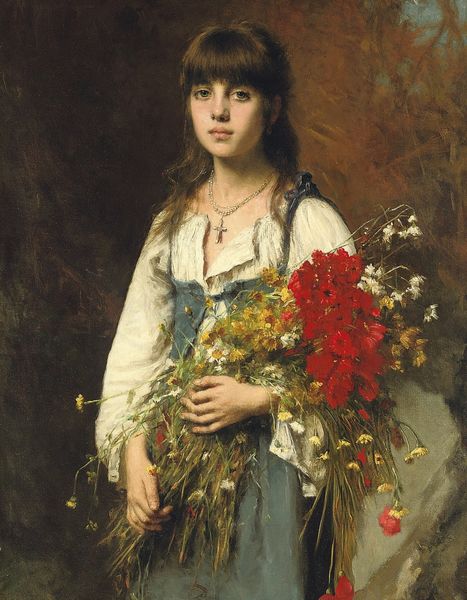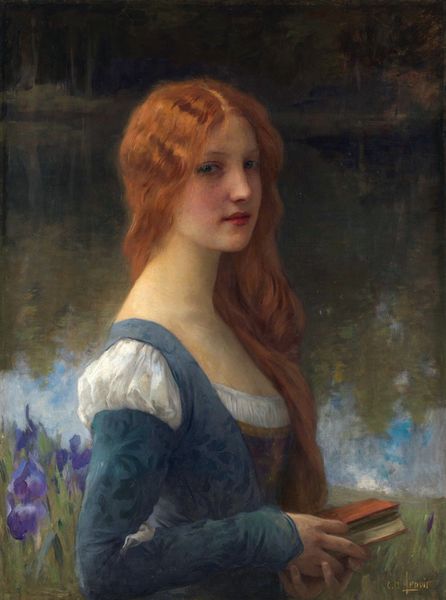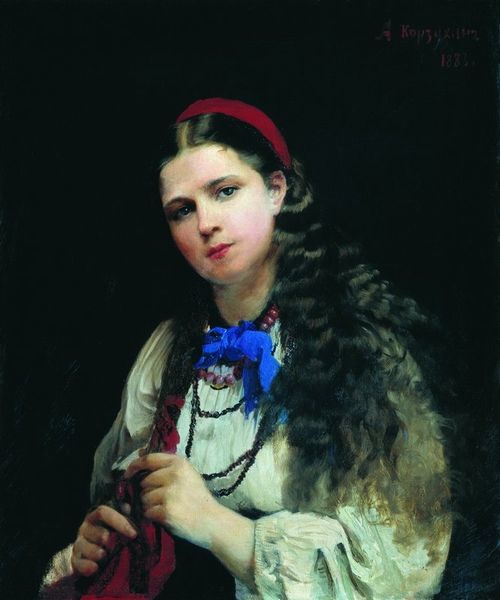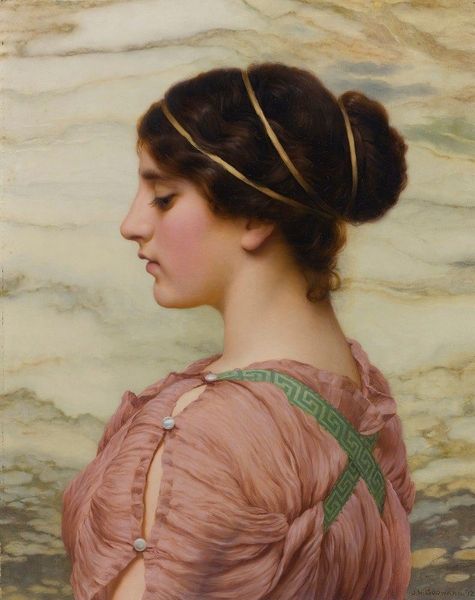
Dimensions: 307.34 x 179.83 cm
Copyright: Public domain
Curator: Eugene de Blaas painted this piece, titled "The Flower Girl", in 1911. De Blaas was known for these idealized scenes of Venetian life, really crafting a market for himself through these portraits. Editor: It’s such a soft image, wouldn't you agree? The pastel colors are undeniably pleasing to the eye, and the way the light catches the flowers in her basket… It's almost cloying in its sweetness, though. Curator: And that sweetness was certainly intentional. De Blaas was creating works for wealthy tourists, offering them an appealing and romanticized vision of Venice and its people. There’s a whole market at play in its conception. These images were quite marketable to upper-class patrons of the arts at the time, you know. Editor: Marketable, yes, but look at the detail in her expression. It conveys such… weariness, maybe? See how it subtly contrasts with the vibrancy of the flowers, the bright colours of the cloth around her neck. The composition uses her downward glance to focus on the lavish display, so our eye is invited to perceive her worth in line with these objects. It’s quite a melancholic piece in that respect. Curator: Well, that interpretation has certainly changed in recent times! Initially, audiences would have perceived it in a different light. Many would admire it for the beauty captured and idealized. What it portrays of Venetian society isn’t what the city really was at the time. De Blaas gave his viewers the Venice they wished to see and purchase, an Italy free of struggle and filled with captivating beauty. Editor: Maybe. But the formal elements provide another story. I'm drawn to how he positions her against the wall. It’s not a bustling Venetian street. Instead, this clean backdrop flattens the image, calling attention to the almost decorative quality of her being there, almost posed against it. She is a figure made to stand still, however, as opposed to somebody really at work selling those flowers. Curator: A very modern interpretation of De Blaas’ art. It just goes to show how time shapes perspectives and criticism! Editor: Indeed. But a painting can hold multiple truths, after all, across artistic intent and historical context.
Comments
No comments
Be the first to comment and join the conversation on the ultimate creative platform.
